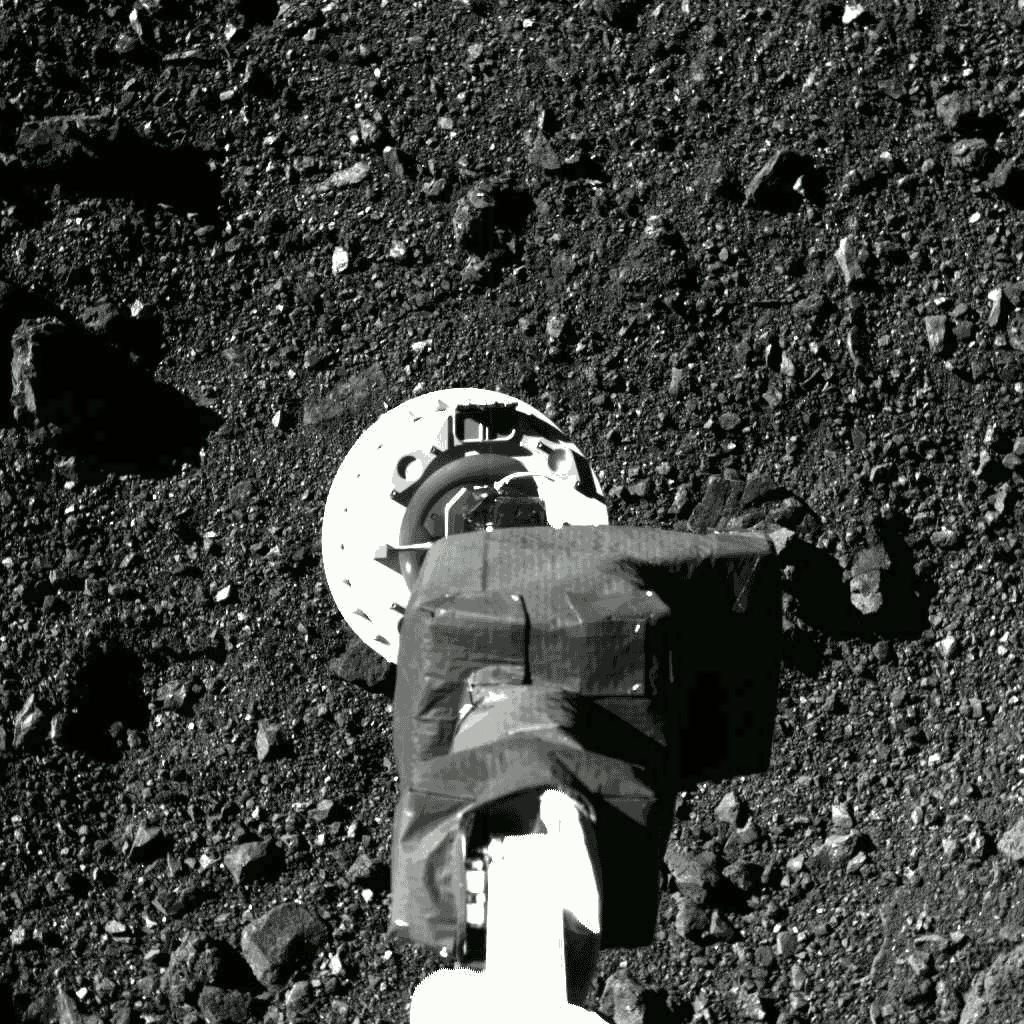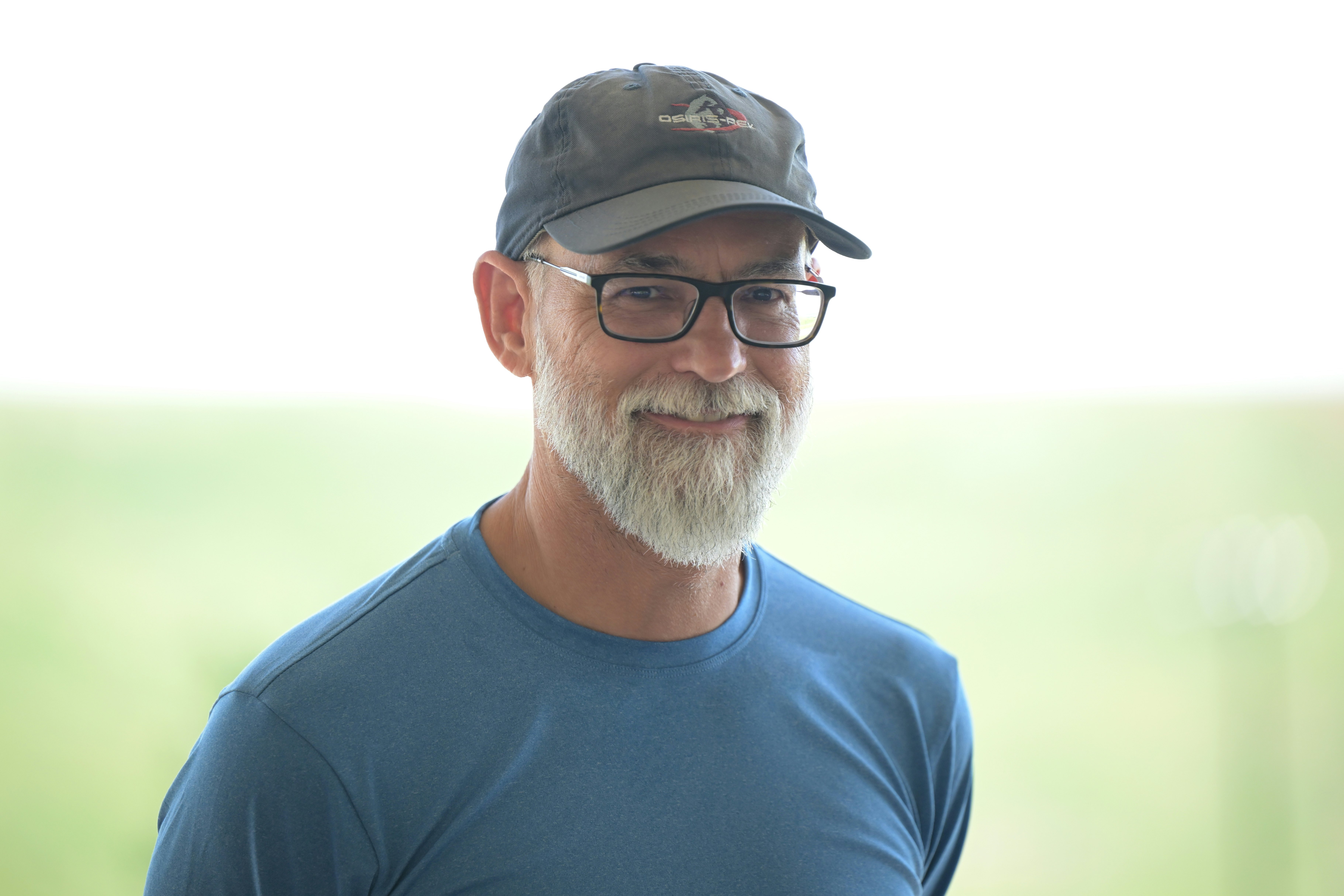
On Sunday, September 24, NASA is doing something it has never done before. At about 10 a.m. Eastern, the space agency will receive its first collected samples from an asteroid, delivered to Earth over the Utah desert.
Like its Japanese predecessor, the OSIRIS-REx mission will come in for a close approach to Earth, release a parcel filled with asteroid rubble, and then fly off toward its secondary mission in the Solar System.
OSIRIS-REx, which stands for Origins, Spectral Interpretation, Resource Identification, and Security–Regolith Explorer, has had a long road. The mission launched in September 2016 and finally reached its asteroid target, Bennu, two years later in 2018. Then, the epic sample retrieval occurred in October 2020 and was almost a total disaster, OSIRIS-REx principal investigator Dante Lauretta tells Inverse. After a scary brush with the Solar System’s surprises, the spacecraft was able to collect pristine material from the asteroid.
Lauretta is now gearing up for the home stretch of the mission. In an interview with Inverse, Lauretta opens up about what it took to reach this final sample phase and what the asteroid sample may reveal about the origins of our universe.

This interview has been edited and condensed for clarity.
Why did you go to Bennu? Why that particular asteroid?
We needed an asteroid that didn’t get too close to the Sun because it gets really hot, and we didn’t want to have a complicated thermal control system. We didn’t want it to get too far away from the Sun because we were using solar arrays for our power. So we had from maybe 0.8 to 1.4 astronomical units, with 1.0 being the average distance of the Earth from the Sun. So a little bit closer than the Earth and a little bit farther away, but not too much. That got rid of most asteroids in the Solar System with that tight of a constraint.
Then, we had to consider the sample return. The steeper the angle the capsule comes in, the higher the temperature and the higher the speed, so we wanted something that was in almost the same orbital plane as the Earth. It also needed to be bigger than 200 meters. Anything smaller than that could spin too rapidly — some of them are spinning once a minute— [and] the idea of touching a surface that’s moving that fast was really daunting.
By the time we went through all of those, there was like a couple dozen asteroids left in the Solar System. Then we wanted to go to one rich in carbon because our science is all about the origin of life and organics. There were five asteroids in the whole Solar System that met all of those constraints. Bennu had the best orbit; it was easily accessible with a pretty standard propulsion system, and we had a lot of data on it.

For all the planning that you did, the retrieval process didn’t go as planned. In fact, you described Bennu as a ball pit in a children’s playground. What happened?
We were expecting a hard surface. We were expecting that this was an asteroid, a rock. We thought we were going to contact the surface of a rock. We actually had a spring in its arm, so the idea was that we would pogo-stick, so it was going to pogo and bounce back off the surface. But that didn’t happen.
When we made contact with Bennu, there was no resistance. There was no solid surface. It was like hitting quicksand, and we just sunk and sunk past the gas bottles of TAGSAM’s arm. If we hadn’t fired our rocket engines, I think we would have just disappeared into the Bennu subsurface, never to be heard from again. Fortunately, we had the engines ready to go. It safely got away from the surface of the asteroid.
You call Bennu a source of grandfather rocks. What makes rocks from Bennu so special?
In some cases, asteroid rocks were the very first solid material that formed in the Solar System. A lot of that got swept up into the planets, especially the inner region where Jupiter’s gravity wasn’t perturbing them. Then, once you get a planetary-sized object like the Earth, there’s radioactive isotopes like uranium and potassium. And they melt. Everything melts. In fact, the surface of the early Earth was probably a magma ocean. The entire surface of the planet was molten. So, any information about the formation of the planet was erased in that event.
You can’t really understand the earliest geologic evolution of the Solar System by looking at Earth's rocks. You can get a little older if you go to the Moon. We learned an enormous amount from the lunar samples that we brought back. But even the Moon has melted, and had volcanoes, and eruptions, and had changes to the surface. So it doesn’t get you back to the very beginning. To do that, you have to go to the asteroids. That’s why I call them the grandfather rocks. They hold the memory of the very early days of our Solar System.
At a press conference earlier this month, you said you plan to be on-site when the sample arrives on Sunday. What will that be like?
When we’re out in the field, we are in a harsh desert climate. So we need to be cognizant of heat stroke and heat exhaustion, so we’re constantly monitoring each other for that.
The area is also a military test range. There could be unexploded bombs and other weapons out there. So, a representative from the Air Force surveys the area to make sure it's safe.
Once the capsule containing the sample is dropped, it needs to be cleared for safety by a safety assurance engineer from Lockheed Martin. Even once that’s cleared, the capsule and samples can still be really hot. So we need to wear thermal protection gloves to protect our hands.
We feel ready. We’re battle-tested. This team knows what to do. The spacecraft is healthy. Everyone is in a good mood. It kind of feels like the calm before the storm. So I’m sanguine. I think that is the word I’m looking for.







